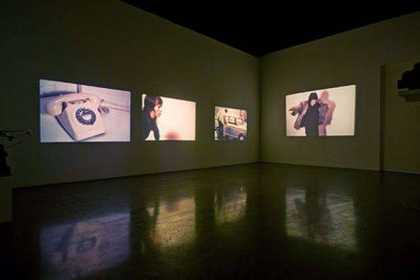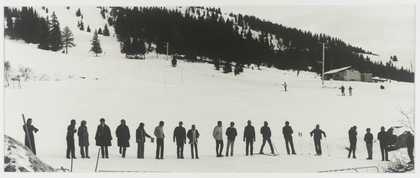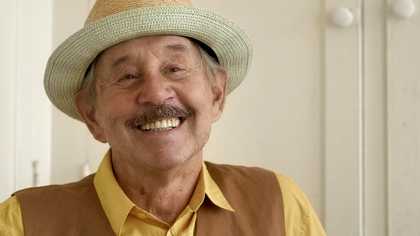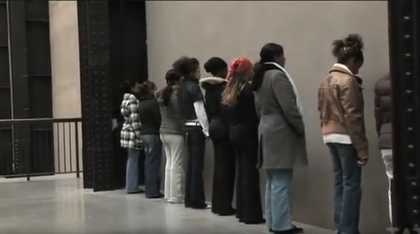We are going to see a work called Time, originally created in 1970. My main interest at that time was to get rid of the objects culture – culture with an object – if you look at Henry Moore or Anthony Caro, you are dealing with the object and the space, so I was particularly interested in the space in between the sculpture – inside the sculpture. Then I decided that to look at space you need time, and the idea of using time as an object without the volume. So I will invite people that are in that room to join me in the piece, and I will make a line on the ground. Usually it is in relationship to the space, in this particular case I use a diagonal to cut the 90 degree angle of the space. It’s an architectural intervention, it’s like a site-specific work. And so everybody will be standing in line next to me, and usually it’s between fifteen and twenty, twenty-five people, because after twenty-five people it will be too long. Because people have to stand in line, they have to make a commitment for the time of the piece. So after twenty-five minutes they find [it] maybe too long. [Agreement from a participant] So when he passes you the time, you keep the time for sixty seconds, then you pass it to your friend. Your friend passes to Linda, and Linda passes to you, and you get the time, you hold the time for sixty seconds, you pass it to your friend, and then when he passes you the time, you count sixty seconds and you pass it to him. Sixty seconds. [Yes.] You pass sixty seconds, and then I will run here and I will end the work. [You end the work.] Okay, I will just start there, okay? [Okay.] But something very interesting happens, because at that moment is a time that really nothing else happens to you, except the passage of time, so you get into kind of a Zen sort of inner self, to try to find your space within yourself. It is not me who creates the work, I just give the elements to create the work, and then the viewer or the performer of this particular work, he or she makes their own work. And I’m very pleased that the Tate actually bought Time in 2005 and I’m very, very happy about it because the Tate didn’t buy an object, didn’t buy sculpture, didn’t buy film, they might have interpreted it by painting or drawing – it means that I achieved what I wanted to do – that is, to be able to produce a work that exists as a concept rather than as an object. And one of the great qualities of art, I think, is that it goes through time and is alive in a thousand years from now. And especially this work, because a thousand years from now people from 3010 will be able to perform a piece of today. So it’s about that, you know, in a way it’s about immortality of concepts. The immortality of art, really.




